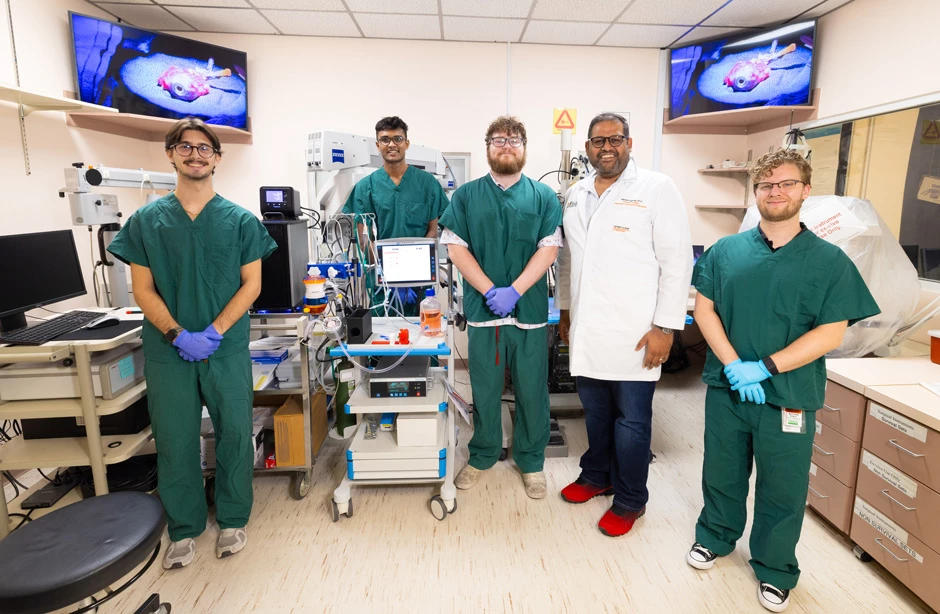Despite what some movies may suggest, it's currently impossible to transplant functional, seeing human eyeballs. Scientists are taking a big step in that direction, however, with the development of an eye-transplant device known as the eye-ECMO.
First of all, we should note that it is possible to transplant non-functional eyes into empty eye sockets for aesthetic purposes, such as during face transplants. Unfortunately, however, those eyes are incapable of seeing.
This is due mainly to the fact that eyes require a constant supply of oxygenated blood, which is difficult to supply after an eye has been removed from a donor's body. If that flow of oxygen ceases for even a short time, the eye's retina will permanently cease to function.
That's where the eye-ECMO comes in.
Taking the "ECMO" in its name from the "extracorporeal membrane oxygenation" systems that are used to oxygenate patients' blood during heart and lung transplants, the device is being developed by scientists from the University of Miami, along with Miami's Bascom Palmer Eye Institute and the Miller School of Medicine.
The idea is that when an eye is removed from a brain-dead donor's body before their clinical death occurs (and with their family's consent), it gets placed in a portable machine – the eye-ECMO – which continuously pumps warmed, oxygenated blood mixed with a "unique solution" in and out of the organ.
As long as that liquid circulates, the eye remains alive and functional. And because the setup is portable and self-contained, both it and the eye can be moved from one operating room to another, or even between different hospitals.

In an initial test of the technology, a prototype device was able to keep a donor human eye viable for several hours after extraction. Importantly, an added dye could be seen flowing through the eye's retina, which remained functional the whole time.
"This type of procedure had never been performed at any site in the US – and perhaps in the world," says team member Assoc. Prof. Ashutosh Agarwal, a biomedical engineer at the University of Miami. "No product like the eye-ECMO exists, but this was the proof that everything was working."
Next steps in the research involve devising methods of preserving and reconnecting the eye's optic nerve. The entire project was made possible through an award from the US Department of Health and Human Services’ Advanced Research Projects Agency for Health (ARPA-H) Transplantation of Human Eye Allografts program, that the entire University of Miami team received in late 2024.
Source: University of Miami




